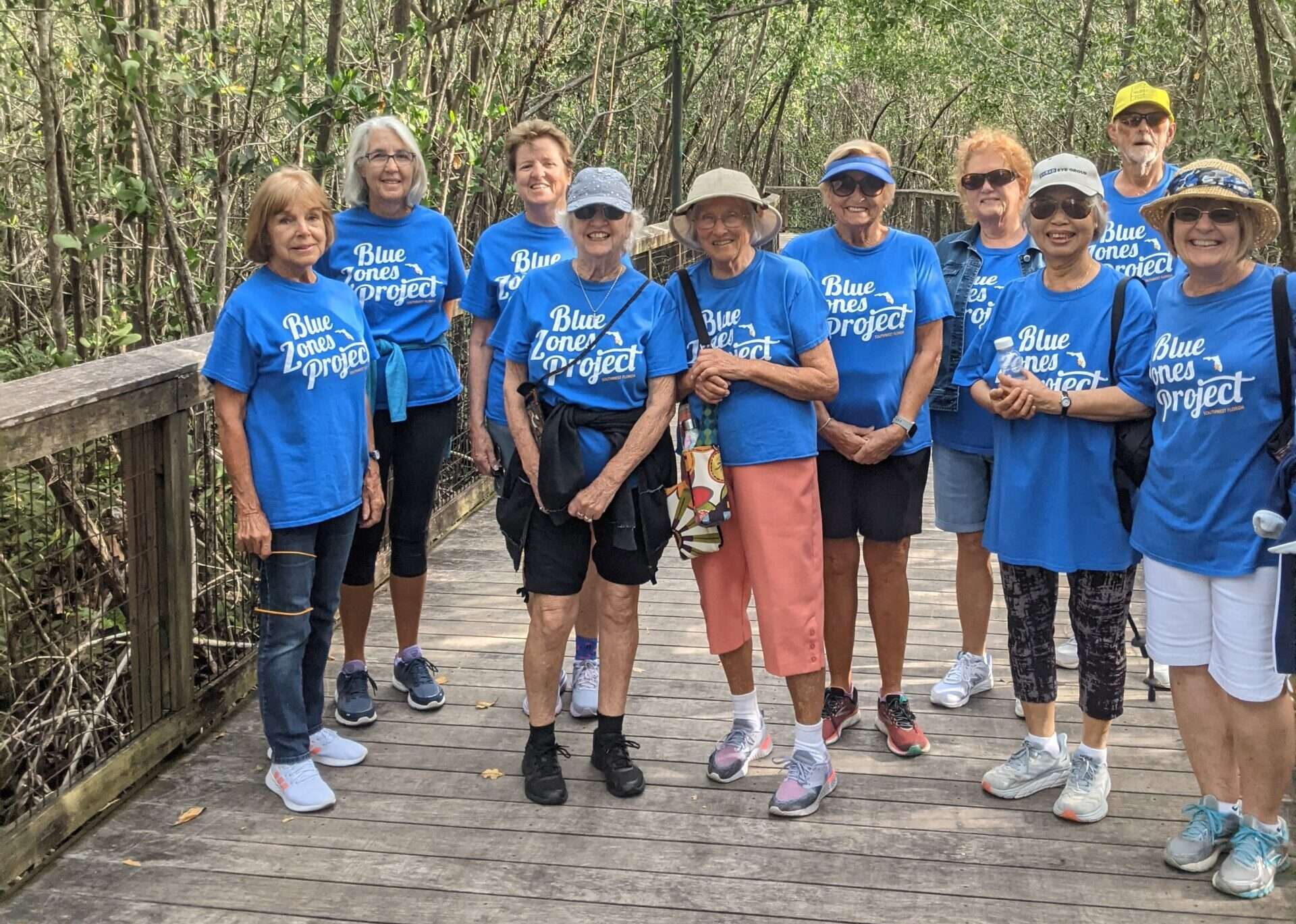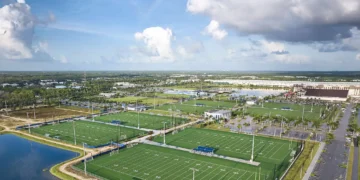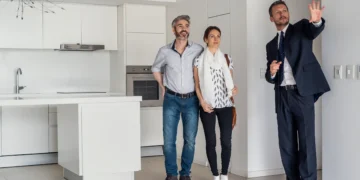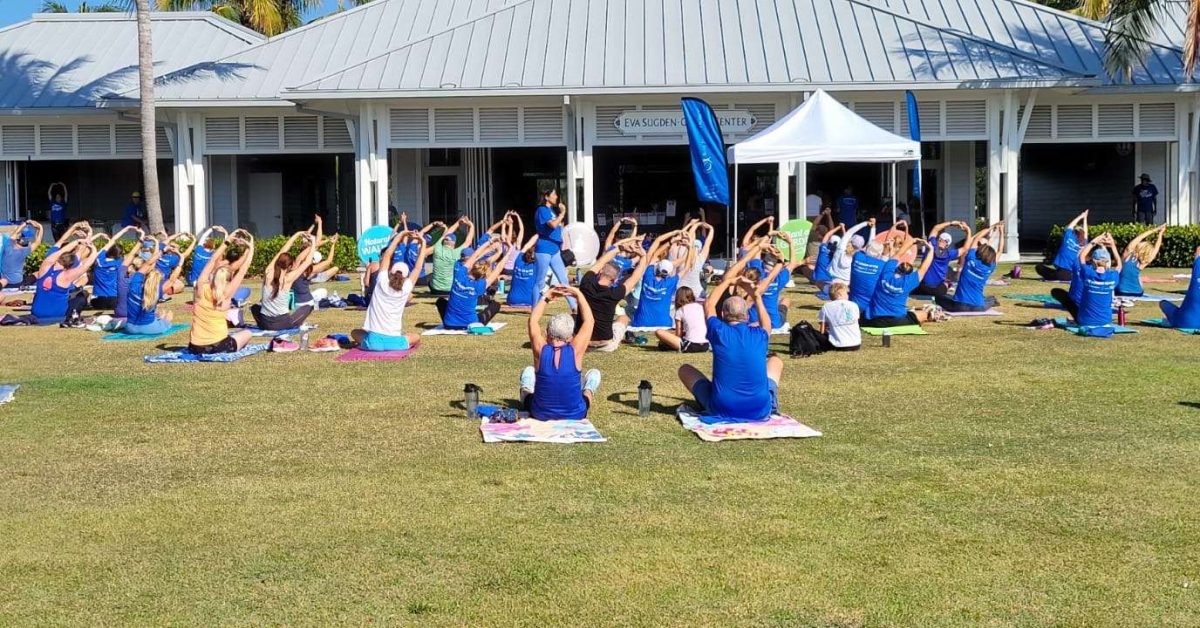Blue Zones Project SWFL and Naples Comprehensive Health have announced their partnership in the program focused on improving community health and well-being will conclude when their current contract expires Aug. 31.
In an email and talking points sent to community partners and media contacts last week, Blue Zones Project SWFL, a part of the international Blue Zones Project active in more than 70 communities around the world, and NCH officials said the program “has exceeded its goals for transformative change and well-being improvement across the region” and NCH and its local partners “are committed to sustaining and expanding upon these achievements.”
NCH has been the exclusive financial sponsor of Blue Zones Project SWFL, making it possible to present programs throughout the community with no charge to participants.
 Why end the project now?
Why end the project now?
Mara Hammond, chief impact officer at NCH, said the original contract with Blue Zones Project that began in 2015 was for eight years, but with the onset of the COVID-19 pandemic in 2020 and the impact of hurricanes Irma and Ian, the health care system decided to extend the contract for another two years.

Mara Hammond
“The original contract was for eight years, for Blue Zones to help the Southwest Florida community build the foundation of how to live a healthier, happier, long life, and it naturally made sense for NCH to be the sponsor of that,” Hammond said. “At the end of those eight years, NCH recognized that with COVID-19 and hurricanes and other things happening in our community, it made sense to extend an additional two years to really ensure that all of the partners and relationships that it would take to sustain those principles and that way of life were solid enough to go beyond the length of the original Blue Zones contract.”
Asked why NCH chose to end the current contract now, Hammond said the program had reached a point where it could “extend and be sustainable” into the future.
“At this point, we felt that Blue Zones had given all of us the foundation and the principles that we need, that now we’re all ready to tailor initiatives and programs directly to what our community needs,” she said. “And that’s where I think there’s going to be an incredible not necessarily shift, but really building upon the foundation that has been set to ensure that any initiative that is started that addresses something related to the health and well-being of our community is one that is tailored to an personalized for those that we serve.”
Hammond declined to provide financial figures for the NCH sponsorship of the 10-year project but focused on the impact of the investment.
“What I will say is that we are tremendously proud to have been the exclusive underwriter of the Blue Zones Project in this community,” she said. “We know that regardless of the dollar amount, the outcomes that we’ve seen are just absolutely outstanding. One of the reasons why we’re just so proud of what we’ve invested in is because of all the tools and services that Blue Zones was then able to provide to our community that were entirely free, no matter someone’s socioeconomic status. Our ongoing commitment is ensuring that all of these tools and assets continue to be free for everybody who needs them.”
 Community impact to date
Community impact to date
The talking points released this month by Blue Zones and NCH stated to date more than 275,000 individuals and 835 organizations, including businesses of all sizes, nonprofits, municipal policymakers and planners, Lee/Collier government, school districts, Departments of Health, restaurants, grocery stores, churches, schools and homeowners’ associations have participated in Blue Zones Project initiatives and activities to help make healthier choices easier. Blue Zones and NCH cited these statistics on community impact from the program to date:
- Overall community well-being rose 3.6 points (as measured for Blue Zones certification timeframe between 2015 and 2021)
- More than 60 new community policies and plans implemented to improve built-environment infrastructure and food systems and decrease tobacco use across Southwest Florida to support better health among residents
- Overall physical well-being rose to 73.4 out of 100, a gain of 6.1 points since 2015 (as measured for certification timeframe between 2015 and 2021)
- Overall purpose well-being rose to 69.9 out of 100, a gain of 4.9 points since 2015 (as measured for certification timeframe between 2015 and 2021)
- Tobacco use is down from 8.8% to 3.6%, a decrease of nearly 60% (as measured for certification timeframe between 2015 and 2021)
- The number of residents suffering from high cholesterol is down 73.1% and those suffering from high blood pressure is down 57.9% since 2015
Blue Zones programs are based on National Geographic research that found nine commonalities among people around the world who live the longest and the healthiest. Those longevity hotspots are known as Blue Zones and the principles they follow are known as the Power 9: move (exercise) naturally, find a purpose, “down shift” from stress, stop eating when 80% full, eat a more plant-based diet, find a daily connection with friends, build social circles that foster healthy behaviors, belong to a civic or faith-based community and put family first.
What’s next?
Megan Greer, executive director of Blue Zones Project SWFL, said with NCH continuing to support key initiatives, she has “a lot of faith” that the community will continue to work together on what has been established.

Megan Greer
“I know that’s a priority of NCH, as well, to support continual movement forward and support community initiatives that are focused on well-being, so a lot of those policies will stay in place,” Greer said.
Greer emphasized that this will always be a Blue Zones-certified community and that resources will continue to be available on bluezones.com for those wanting to stay up to date on best practices based on Blue Zones principles.
Asked what she is most proud of, Greer cited the high level of collaboration between organizations and community members working together for the betterment of the community.
“My hope is that we continue to work upstream and solve problems before they’re even problems and start working on prevention so that we don’t have a childhood obesity problem to solve because we have prevented these chronic diseases from happening in the first place,” Greer said.
As for NCH’s commitment to sustaining key initiatives, Hammond said future priorities, among others, will include a focus on food access through food pantries and other nonprofits that help ensure low-income families “are getting food that can support a healthy lifestyle. But going beyond that, we are going to be expanding our outpatient nutritional education to ensure that not only do our patients and our community have access to this food, but they also know how it supports a healthy lifestyle for whatever their needs are.”
Blue Zones Project SWFL and NCH will present their 2024 Community Well-being Index Assessment and final report at an event in mid-August.





